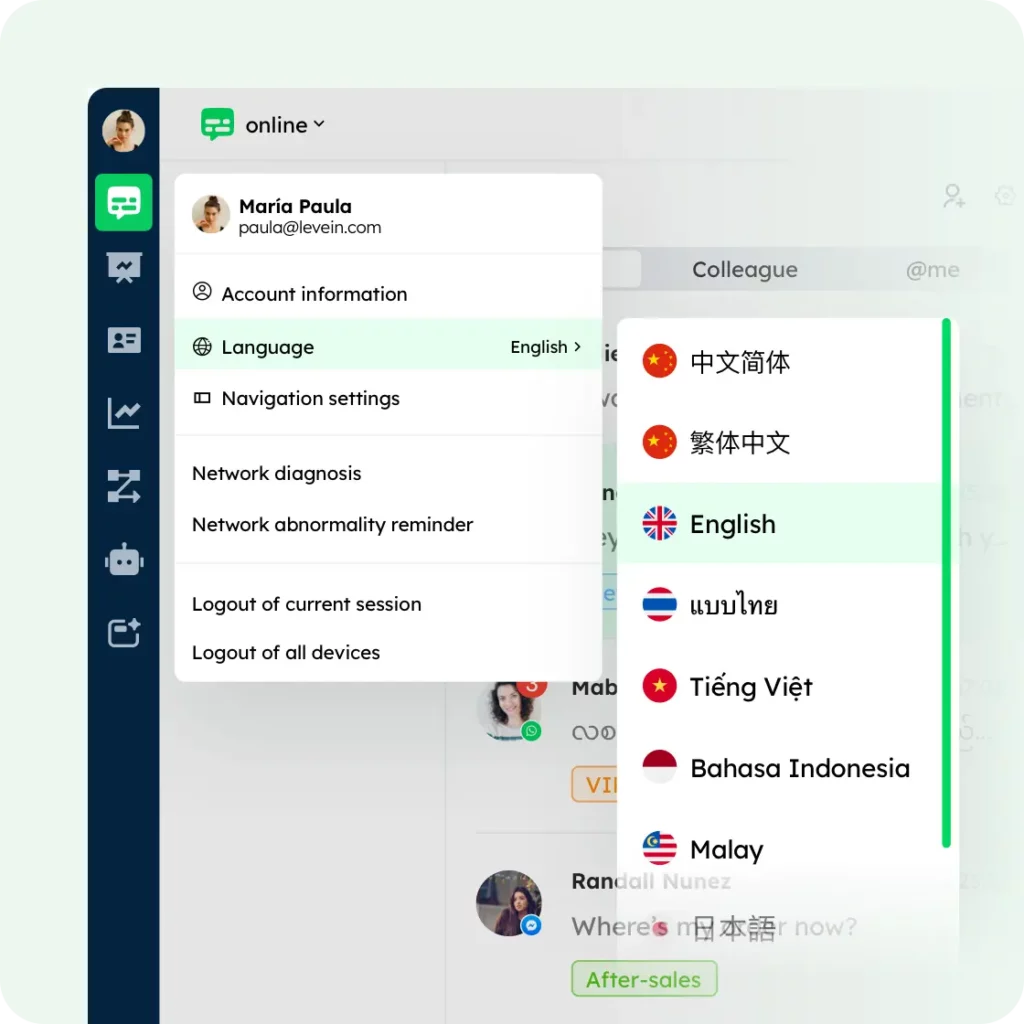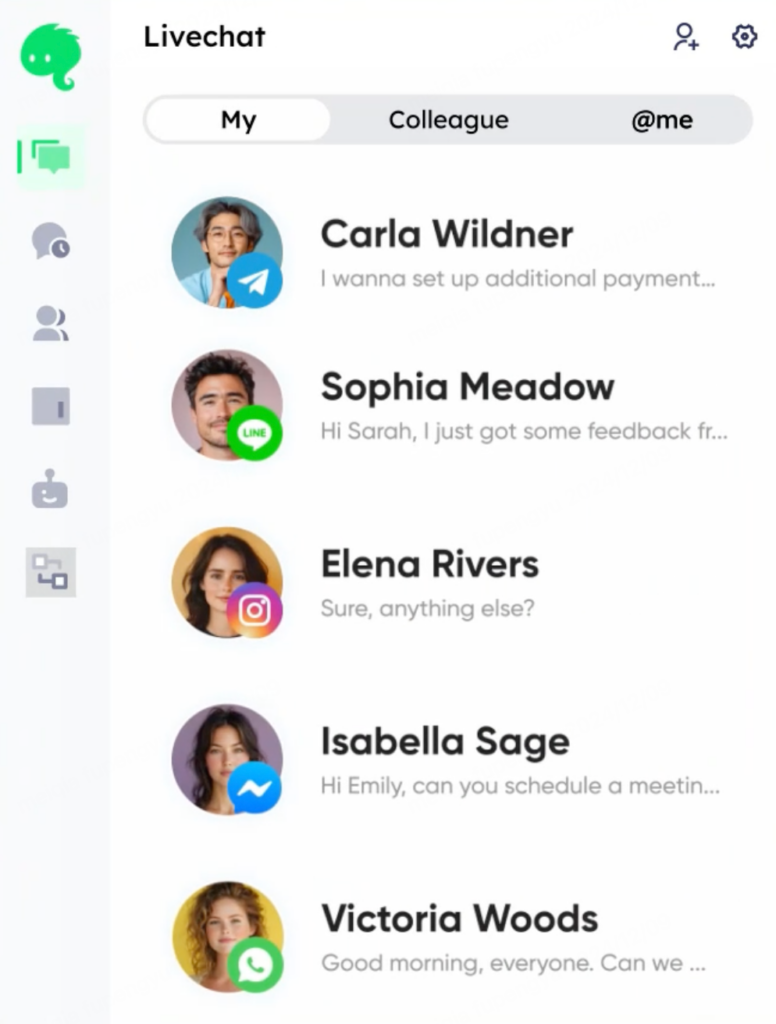Author of this article:Fiona
In the context of the wave of globalization and the rapid growth of cross-border e-commerce, customer service is no longer just an "after-sales position”, but runs through “Drainage → conversion → repurchase → retention” The key link of the whole process.
However, when companies move from domestic to overseas, customer service challenges suddenly escalate.:Multilingual communication、Cross-time zone response、channelDecentralization, title risk, privacy compliance... Any link that goes wrong may make the company's overseas growth fall short.
At this time, a good one Overseas customer service tools It has become the “growth operating system” of the enterprise. But in the face of hundreds of customer service systems on the market, many companies are confused when choosing models.:
“I need a multilingual customer service system, do I have to buy an API? ”
“There are not many people in my team. Which system is the most labor-saving? ”
“What kind of tools can reduce the risk of title? ”
This article will start from the pain points of the enterprise, disassemble the five key selection dimensions of overseas customer service, and combine Mixdesk Intelligent customer service platform Practical cases to help you find the best solution for your company in 2025.
- 1. The core challenges of overseas customer service: from "monolingual customer service” to "global operation”
- 2. The 5 core standards for the selection of overseas customer service tools
- 3. Tool selection cases for different overseas scenarios: accurately match business needs
- Summary: In 2025, go to sea for customer service tools, choose “full link integration” instead of “single function”
- FREQUENTLY asked questions: Frequently asked questions about overseas customer service tools
1. The core challenges of overseas customer service: from "monolingual customer service” to "global operation”
To do customer service in China, you may only need to deal with Chinese users and be unified during peak hours. But once it goes overseas, the complexity of customer service increases exponentially.:
- Multilingual barrier

One of the biggest challenges of cross-border business islanguagediversity. Customers from different countries and regions use completely different language systems-English, Thai, Vietnamese, Indonesian, Malay, Filipino and other 6 languages are common in the Southeast Asian market; the Latin American market is dominated by Spanish and Portuguese; and in the Middle East, Arabic has a unique word order and expression logic. If companies rely on human translation to handle these consultations, it is not only costly, but also prone to semantic deviations, leading to communication misunderstandings. Moreover, multilingual customer service often means multi-shift teamwork, asymmetric information, and delayed communication. In the long run, companies will inevitably lag behind their competitors in terms of customer experience. therefore,With real-timetranslation, A customer service system that automatically recognizes languages and localized expression capabilities, Has become a just need for overseas companies. like Mixdesk This kind of intelligent customer service platform supports real-time translation and cultural context adaptation in hundreds of languages, truly helping companies break down language barriers and make every cross-border dialogue efficient, accurate and natural.
- Time zone and response delay
The customers of cross-border e-commerce or overseas services are widely distributed, and the time zone span often exceeds 10 hours. If the average response time exceeds 10 minutes, the conversion rate will drop by more than 43%. The more realistic problem is: customers will not wait. They are more inclined to get answers immediately, otherwise they will soon turn to competitors' pages or customer service. Relying on manual customer service is almost impossible to achieve 7×24 hoursUninterrupted response, and automated customer service tools can solve this pain point. To MixdeskSmart customer service For example, its AI agent can automatically identify the type of problem based on the content of the customer's consultation, and give an accurate reply within a few seconds; if necessary, it can smoothly transfer to manual customer service to achieve a seamless connection of “AI + labor”.
- Channel dispersion

The communication methods of modern overseas users are becoming more and more diverse-they may pass through at the same time WhatsApp、Facebook Messenger、Instagram、Telegram, and even initiate a consultation in the chat window of the official website. However, the customer service teams of many companies still have “multi-window operations”: log in to each platform separately to reply manually. This is not only inefficient, but also can easily cause missing messages. and Multi-channel aggregated customer service system The value lies in breaking this kind of information silo.Mixdesk Messages from multiple social media, instant messaging software, and websites can be aggregated into the same workbench, and customer service personnel and AI robots can share customer contextual information to achieve unified replies, unified labels, and unified records. This means that no matter which channel customers contact you from, they can get a consistent and consistent service experience, and companies can also achieve a closed loop of omni-channel customer relationship management.
- Title and risk control
In the current WhatsApp, Meta and other platformsIncreasingly stringent supervisionIn the context of this, safety and compliance operation capabilities have become the bottom line of customer service system selection. In the operation of many overseas companies, WhatsApp and Facebook have determined that they are abnormal due to “excessive mass distribution”, “frequent switching of logins”, and “cross-border IP logins”, which triggered the title mechanism. Once the main account number is blocked, it means that all potential customer contacts are interrupted and historical messages are lost. Not only communication channels are lost, but also trust and brand assets are lost. To solve this problem, the ability of risk prevention and control at the system level is essential.Mixdesk Through independent IP and simulated Web login technology, the risk of account association and frequent switching is effectively reduced, thereby protecting the long-term stable operation of the account.
- Data and compliance
Different countries and regions have strict legal requirements for data security and privacy protection. Regulations such as the European Union's GDPR, the United States' CCPA, and Brazil's LGPD all clearly stipulate that companies must obtain clear authorization and properly encrypt customer data when collecting, storing, or transmitting it, otherwise they may face high fines or risks of bans. Therefore, when choosing a customer service system, compliance and data protection capabilities must be the first priority.Mixdesk It adopts bank-level encryption and has passed the dual security certification of GDPR and ISO 27001 to ensure that all messages, customer data, and translated content are processed in an encrypted environment. At the same time, the system supports “role-level authority management” to ensure that different positions can only access data within the scope of authorization, and prevent internal leakage from the source.
These challenges have determined that overseas customer service tools are no longer “chat software”, but a cross-language, multi-channel, intelligent and compliant global customer service system.
2. The 5 core standards for the selection of overseas customer service tools
In 2025, chooseOverseas customer service toolsThe key is not “multi-function”, but "adaptability”. The following five dimensions are the core standards that enterprises must focus on evaluating:
- Multi-channel integration ability: unified management of all overseas contacts
Customers come from different platforms, but they want a unified experience. After multi-channel aggregation, the customer service team can uniformly view, reply to and manage customer messages in one background, avoiding repeated communication and customer churn, and reducing manual switching costs. An excellent overseas customer service system should be able toGet throughThe main channels in the market:
- WhatsApp(Including personal number, Business App, API)
- Facebook Messenger / Instagram DM
- Telegram / Line / Email / Official Website
- Multilingual and real-time translation capabilities: only when communication is barrier-free can there be a transaction.
The global market means multilingual communication,Real-time translationIs the core of enhancing transformation. A high-quality customer service system should have the following capabilities:
- Automatically recognize customer language and translate instantly;
- Support voice, picture and text translation;
- The translated content can be based on the sceneOptimize tone。
- AI automation and customer layering: from "manual customer service” to "intelligent assistant”
Traditional customer service relies onmanpowerShifts, low efficiency and error-prone. The introduction of AI customer service has enabled overseas companies to upgrade from “passive answering” to “active marketing”. The core capabilities of AI automation include:
- Intent recognition: Identify intentions such as “price consultation”, “after-sales problems”, “complaint feedback”, etc.;
- Automatic labeling: mark “high intention”, “potential customer”, and “after-sales” for customers;
- Automated workflow: such as triggering marketing or follow-up actions based on keywords.
- Compliance and account security: anti-title, anti-violation, data security
One of the biggest risks of cross-border customer service is Account blocking and data leakage。 When selecting models, companies should focus on the following aspects:
- Whether to adopt Independent IP + simulated web login(Prevent frequent switching to trigger the title);
- Is it in line with GDPR / CCPA / ISO 27001 And other international data security standards;
- Whether to support Rights management(For example, ordinary customer service cannot view customer private data).
- Data analysis and visual monitoring: make customer service conversions quantifiable
An excellent customer service system can not only chat, but also help you “see ROI” and observe customer interaction.data, The response performance and transformation trends of each channel. Common key indicators include:
- Customer response time and automatic response rate;
- Customer source channels and conversion paths;
- Distribution of common problems and customer satisfaction.

3. Tool selection cases for different overseas scenarios: accurately match business needs
Scenario 1: Cross-border e-commerce (multi-platform + high-frequency after-sales)
Core pain points: It is necessary to deal with the full-link issue of “product consultation → order follow-up →after-sales exchange”. There are many multi-platform messages, and after-sales consultation accounts for a large proportion.
Tool requirements: Multi-channel aggregation, automatic synchronization of logistics information, and AI answers to high-frequency questions.
Mixdesk solution:
- No need for development team support, one-click aggregation of mainstream communication channels such as Facebook, WhatsApp, independent stations, Instagram, LINE, email, etc.;
- Mixdesk The API interface in the background supports access to ERP systems, logistics systems, etc. AI customer service can directly call internal data during the dialogue to realize automatic reply to logistics progress, order details and other information based on customer data.;
- Customize rules for high-frequency business scenarios, combine basic quick response with AI capabilities, and build a full-process automated response logic.
effect: After the use of a cross-border home e-commerce, the after-sales consultation processing time was shortened from 15 minutes to 3 minutes, and the customer's bad evaluation rate decreased by 58%.
Scenario 2: Foreign trade B2B (high customer unit price + long-term communication)
Core pain points: Customer inquiries are mostly “bulk quotations” and "customized requirements". The communication cycle is long, and the details of customer needs need to be recorded, and the rhythm of follow-up is critical.
Tool requirements: Customer label classification, communication record archiving, data security.
Mixdesk solution:
- Label by "customer type” (such as “U.S. wholesaler”, “Indian agent"”, "demand stage" (such as "inquiry"“ "sample test");
- Automatic archiving of communication records, support retrieval by label;
- Using top-of-the-line encryption technology, the data is stored in Amazon Web Services to ensure the security of data transmission and storage.
Scenario 3: SaaS goes to sea (multi-language support + technical support)
Core pain points: Customers come from all over the world and need to solve “product usage problems”, and there is a large demand for multilingual technical documents.
Tool requirements: Multilingual technical documents, technical work order allocation, cross-time zone response.
Mixdesk solution:
- It supports more than 100 languages around the world, covering most cross-border trade markets. Whether the customer is from a small French town or an African port, they can communicate instantly. With the support of the big language model, AI customer service can combine context, understand the customer's true intentions, and give contextual answers.;
- Prioritize the response. For inquiries about product inventory, prices, order processes, etc. that are directly related to the transaction, they are marked as high-priority, and priority will be given to replies; for general inquiries or after-sales questions, they will be answered in time in order.;
- Mixdesk Intelligent customer service can be achieved 7×24 hours all-weather instant response, No matter which time zone the customer is in, they can get an accurate reply within a few seconds.
Summary: In 2025, go to sea for customer service tools, choose “full link integration” instead of “single function”
The core contradiction of overseas customer service has been upgraded from “whether it can communicate” to “whether it can communicate efficiently, in accordance with regulations, and in a localized manner.” When choosing tools, don't blindly pursue “full functionality”, but focus on “business matching”.Mixdesk The value lies in “taking customer service as the core and opening up the whole link of overseas business”: from multi-channel message aggregation to multi-language real-time translation, from AI automated response to ERP/CRM system docking, to global data compliance adaptation, so that overseas enterprises can achieve it without having to build a complex technical and human system."Efficient docking of global customers".
Year 2025,Go to seaCompetition has entered the stage of ”refined operation“, and the gap in customer service efficiency will directly become the ”key gap" for enterprises to seize the target market. Choosing the right overseas customer service tools can not only reduce costs and improve customer satisfaction, but also lay the foundation for the long-term growth of the brand in the global market.

Mixdesk is an overseas multi-channel intelligent customer communication platform that can unify multiple channels such as Facebook, Instagram, WhatsApp, Line, Telegram, and Email to help companies communicate and serve customers. Mixdesk also supports AI employee functions, allowing enterprises to achieve more efficient automated customer service.
FREQUENTLY asked questions: Frequently asked questions about overseas customer service tools
Q1: Can the WhatsApp personal account be accessed using the Mixdesk customer service system?
A: Yes. Mixdesk supports access to personal, business, and API numbers to help small and medium-sized enterprises manage customers at low cost.
Q2: Is the WhatsApp Business API number necessarily more secure?
A: The WhatsApp Business API number has been approved by Meta, which is suitable for large-scale mass distribution and CRM integration. However, the approval cycle is long and the fees are high. If the personal account uses Mixdesk's independent IP and simulated login technology, the risk of title can also be effectively reduced.
Q3: Will real-time translation by Mixdesk cause semantic bias?
A: Mixdesk translation is based on AI semantic understanding, which can combine context and knowledge base to optimize translation results, which is more natural and accurate than traditional translation plug-ins.
Q4: Can the Mixdesk customer service system help me with active marketing?
A: Yes. Mixdesk supports regular targeted mass distribution and automated push, and combined with customer tags, it can achieve “thousands of people and thousands of faces” message reach.
Q5: Is the data safe?
A: Mixdesk has passed compliance certifications such as GDPR, ISO 27001, CCPA, etc. All data is encrypted and stored on AWS servers.
